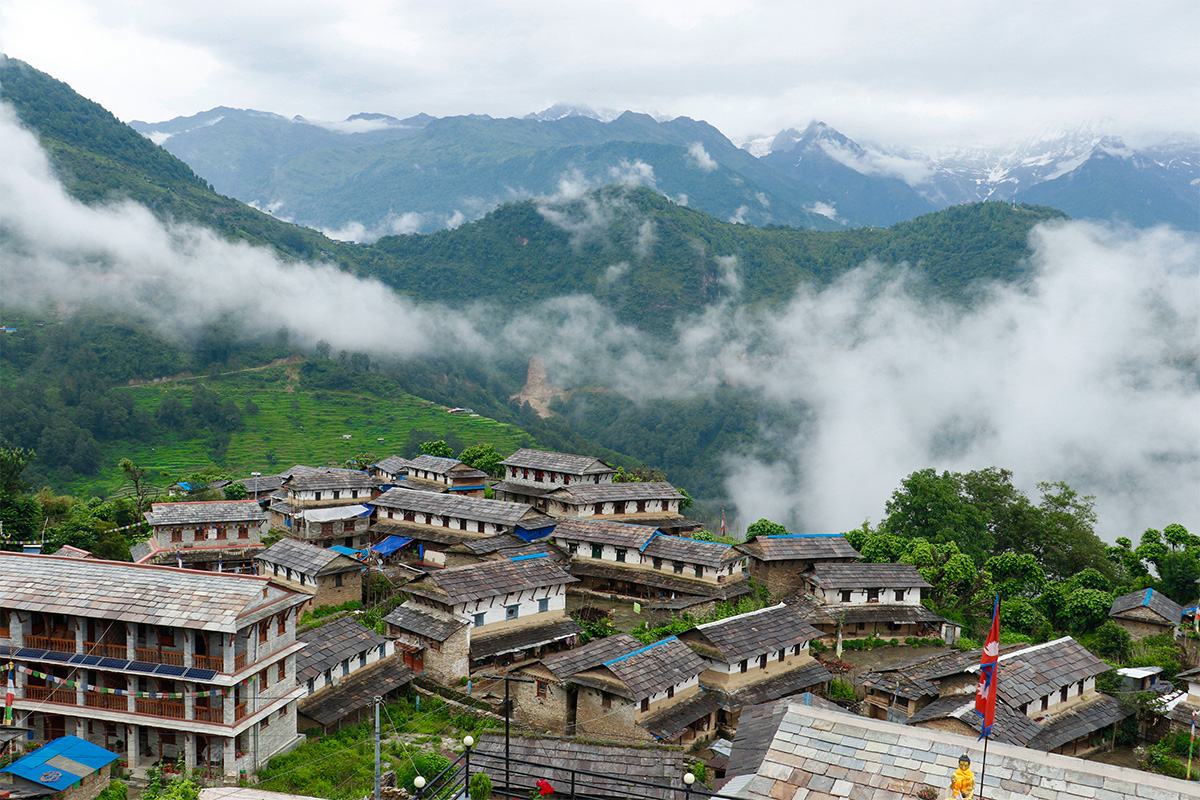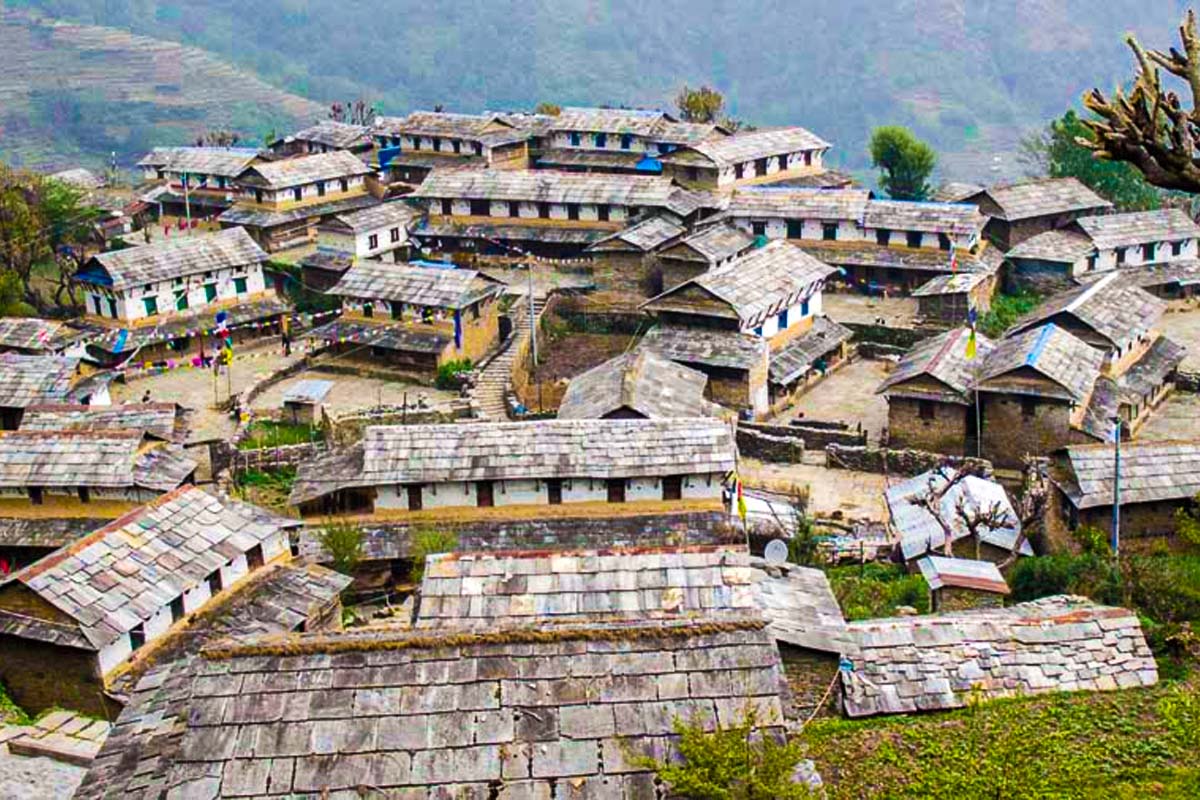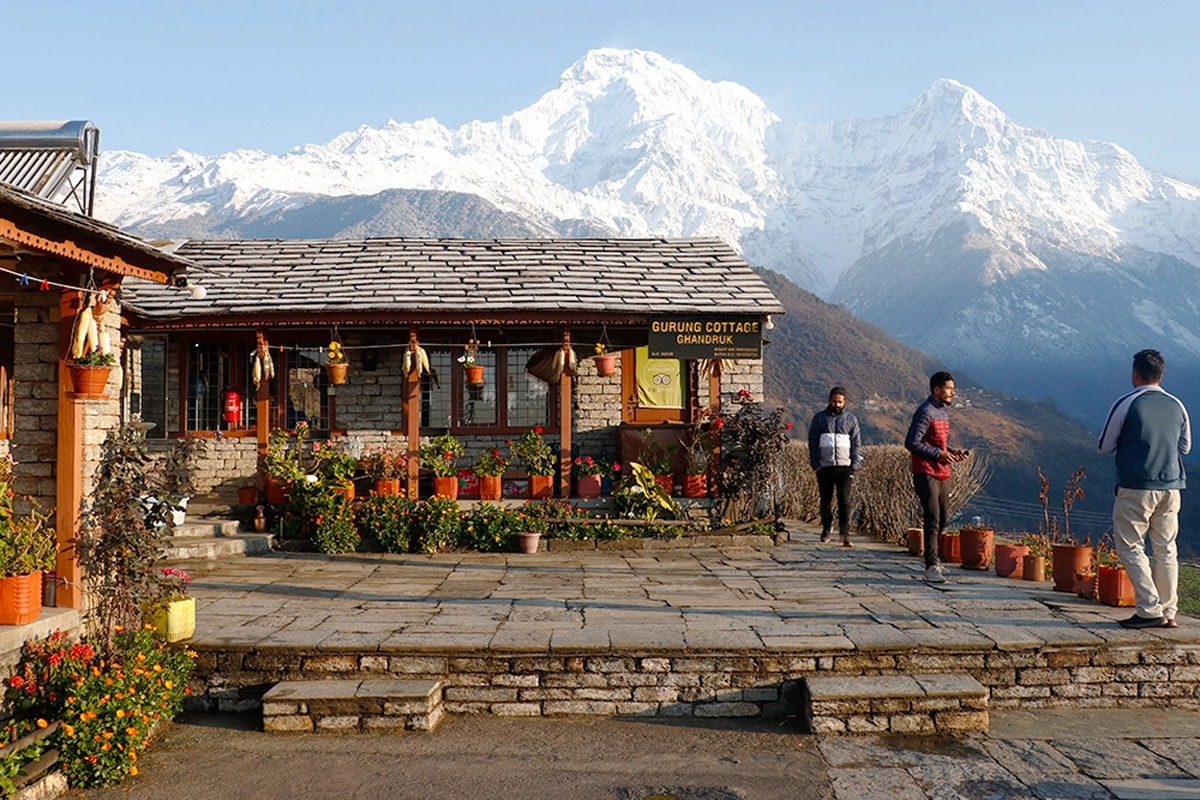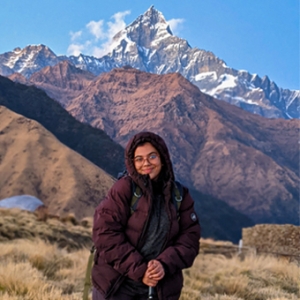How to Reach Ghandruk Village?
Ghandruk is easily accessible from Pokhara, making it a popular destination for trekkers and travelers looking for a short yet scenic journey into the Annapurna region. There are multiple ways to reach Ghandruk, depending on your preference for comfort and adventure.
By Road and Short Trek
The most common way to reach Ghandruk is by taking a jeep or bus from Pokhara to Kimche, followed by a short hike to the village.
- Drive from Pokhara to Kimche: A 3 to 4-hour scenic drive along a winding mountain road.Jeeps and buses are available from Baglung Bus Park in Pokhara.
- Trek from Kimche to Ghandruk: A 1-hour upward climb on a well-paved stone staircase road takes you into the heart of Ghandruk.
This route is the least time-consuming means of reaching the village while you get to walk a little along the trek routes.
.jpg)
By Trekking from Nayapul (Classic Route)
As much as some like the shorter ones, the longer route that reaches Ghandruk is 5-6 hours from Nayapul.
Drive from Pokhara to Nayapul: 1.5 hours
- Trek from Nayapul to Ghandruk: The route is through small villages like Birethanti and Syauli Bazar before it rises up to Ghandruk. Again, the route upwards is quite scenic as it crosses a number of terracing, rivers, and green hills.
Trekking to Poon Hill (Extended Route)
Ghandruk can also combine for the adventure-on with the very famous Poon Hill trek.
- Day one: Trekking from Nayapul to Tikhedhunga or Ulleri.
- On day two, start the trek to Ghorepani, then view the sunrise from Poon Hill.
- On the third day, descend via Tadapani, finally reaching Ghandruk. Generally, it takes up to 3-4 days, but that gives a better feel of the trek and the sunrise from Poon Hill is really breathtaking.
Whichever route you have chosen, Ghandruk has become very well-linked and accessible, therefore ideal, for trekkers of every level.
Attractions and Highlights of Ghandruk
Spectacular Himalayan Views
The village offers spectacular views of the famous peaks, including Annapurna South (7,219m), Hiunchuli (6,441m), and Machhapuchhre (6,993m)-also called Fishtail Mountain. It is truly mesmerizing how this chain of giant snow peaks is changing color depending on the moments of rising or setting of the sun. Among the unique magical moments that could be cherished from Ghandruk are early morning times, whereby the golden sunrise transforms these mountains into gold color. During evening time, the view is similarly captivating with the setting sun coloring the mountains reddish; therefore, this makes the place a perfect venue for photography and peaceful contemplation, as well.

Traditional Gurung Culture and Lifestyle
Besides its natural beauty, Ghandruk itself is a treasure of culture. The village falls under the indigenous ethnic group Gurung-one among the major native ethnic groups famous for their courage, hospitality, and rich cultural traditions in Nepal. Ghandruk has many Gurungs who have served as Gurkha soldiers in the British and Indian armies, so the village carries historical significance. Visitors can get a firsthand view of Gurung culture by communicating with the people, their attire, and even joining in some of their daily activities. Women in the village are usually seen in bright traditional attire and weaving woolen garments, a skill passed down from generation to generation.
Ghandruk Gurung Museum
A visit to the Ghandruk Gurung Museum provides insight into the style of life and heritage among local people. Even though this museum is small in size, it imparts information and comprises traditional Gurung dress, equipment, and household utensils relating back to several hundred years of their history. The museum shows weapons and different ornaments that manifest the military service legacy of Gurkhas. Exploration to these museums allows learning how the people of Gurung have kept intact their style of surviving even during modernization.
Traditional Stone Houses and Cobbled Streets
Other distinctive features of Ghandruk include traditional stone houses and cobbled streets. Whereas other villages have given in to modern construction, Ghandruk retains its old-world charm with its houses made of locally sourced stones, neatly lined up along narrow, serpentine pathways. Walking down the stone-paved streets gives the impression of a time lapse as one experiences a serene and more engrossing Nepalese village life. Beautifully fluttering prayer flags, small Buddhist stupas, and traditional water mills further enhance the scenic beauty of this village.

Gateway to Annapurna Base Camp and Poon Hill Treks
Ghandruk is a gateway to the Annapurna Base Camp trek for trekkers. Many trekkers either start or pass through Ghandruk on the way to higher altitudes, making it an important stop in the Annapurna trekking circuit. From Ghandruk, one of the most scenic routes with lush forests, waterfalls, and mountain vistas accompanies the trekker on his way to Chhomrong and further to ABC. Ghandruk is also a starting point for short treks, for example, to Poon Hill, known for its magical views at sunrise above the Himalayas.
Accommodation in Ghandruk
Basic Accommodation
Ghandruk, being one of the most popular trekking destinations in the Annapurna region, offers a range of accommodation options to suit different types of travelers. From basic teahouses to comfortable lodges, visitors can find a place to stay that matches their budget and preference. The majority of accommodations in Ghandruk are traditional tea houses run by local families, providing trekkers with an authentic and cozy experience. These tea houses usually have very simple but comfortable rooms with twin beds, blankets, and shared bathrooms. Without offering luxury, they are warmly welcoming, thus making the visitor feel at home in the mountains.
Luxury Accommodation
For those who want a bit more comfort, there are also higher-class lodges and guesthouses, offering upgraded facilities such as private bathrooms, hot showers, and WiFi. Some of these lodges have big window dining areas where one can view the majestic range of Annapurna. The inside is well-kept, and with wooden furniture and traditional decorations, it becomes very appealing to spend time in Ghandruk. While the village does not house any luxurious hotels, these are enough to stay comfortably and quietly for a few days on trek or simply enjoying the Himalayas.
Food Options in Ghandruk
The meals in Ghandruk include local traditional Nepalese cuisine and some variety of food based on the multicultural aspect for a huge trekker crowd who belong to many countries taste-wise. In Ghandruk, the menu for trekking applies to all meals, including staple ones through almost every teahouse or lodge, together with more variants, different in meal preparations for hearty eating by the trekkers. This includes the ever popular Dal Bhat, also known as a traditional Nepalese meal of steamed rice, lentil soup, vegetable curries, pickles, and sometimes meat. The nutritional value of Dal Bhat is very well known, and it's an all-you-can-eat meal, which means trekkers can request refill(s) for free.
Besides Dal Bhat, several lodges serve noodles, pasta, fried rice, Tibetan bread, pancakes, and momos - a type of dumpling. Porridge, eggs, toast with honey, hot tea, and coffee are available to warm up the trekkers in the chill morning of the mountain. Most of the ingredients for foods are transported from the lower regions since Ghandruk is a bit remotely located, hence these foods are a little bit pricier than in the cities. However, freshness and the taste of the meals make them worthy.
For those in the lookout for authentic Gurung cuisine, it covers local delicacies: Gundruk (fermented leafy greens), Dhido-traditional buckwheat or millet porridge, and Sisnu-a locally prepared nettle soup-are prepared at some teahouses and homestays. These traditional dishes are different in giving novelty to taste buds and significant food culture changes. Besides that, homemade yak cheese and butter tea are also available to be availed of this way of taste of the Himalayan dairy products.
/Food at Annapurna Circuit.jpg)
In the evening, it would be hot drinks in front of the fire, as many lodges have common dining rooms with wooden stoves that keep the guests warm. Such sitting around a fire, having ginger tea, and chatting with fellow trekkers adds friendly coziness to the time spent in Ghandruk.
Accommodation and food in Ghandruk, whether sleeping in a simple tea house or staying in a more decent lodge and having a plate of Dal Bhat or a cup of butter tea, are equipped with all the fuel, warmth, and hospitality travelers would need to enjoy their stop in this beautiful Himalayan village to the fullest.
Best Time to visit Ghandruk
Spring (March up to May), and Autumn (September up to November), are said to be the best time for visiting Ghandruk. This is indeed a very fine time of the year with mild temperatures and clear skies, besides the vibrant-colored rhododendron blooms painting the surrounding forests in shades of red, pink, and white. It's a great time for trekking: skies clear, weather mild, and amazing panoramic views of the Annapurna and Machhapuchhre peaks.
These seasons also fall along with the famous festivals, Dashain and Tihar, adding cultural depth to the venture. Winter is quiet, too, with snowfall from December to February, while temperatures can be quite cold, making it ideal for times of solitude. The monsoon period, normally starting from June to August, is not high in recommendation because of excessive rain and slippery trails, yet it is quite quiet, and few tourists head in during that period.
Conclusion
In the end, Ghandruk is a perfect destination for nature lovers, cultural explorers, and trekking enthusiasts. This picturesque village offers an unforgettable experience in every season, from breathtaking Himalayan views and rich Gurung heritage to serene landscapes. While spring and autumn are the best times to visit because of clear skies and ideal conditions for trekking, each of these seasons has its own appeal. From adventure to cultural immersion, or an escape of quiet retreats, Ghandruk promises a memorable journey of natural beauty and warm hospitality.



.jpg)


/Food at Annapurna Circuit.jpg)
